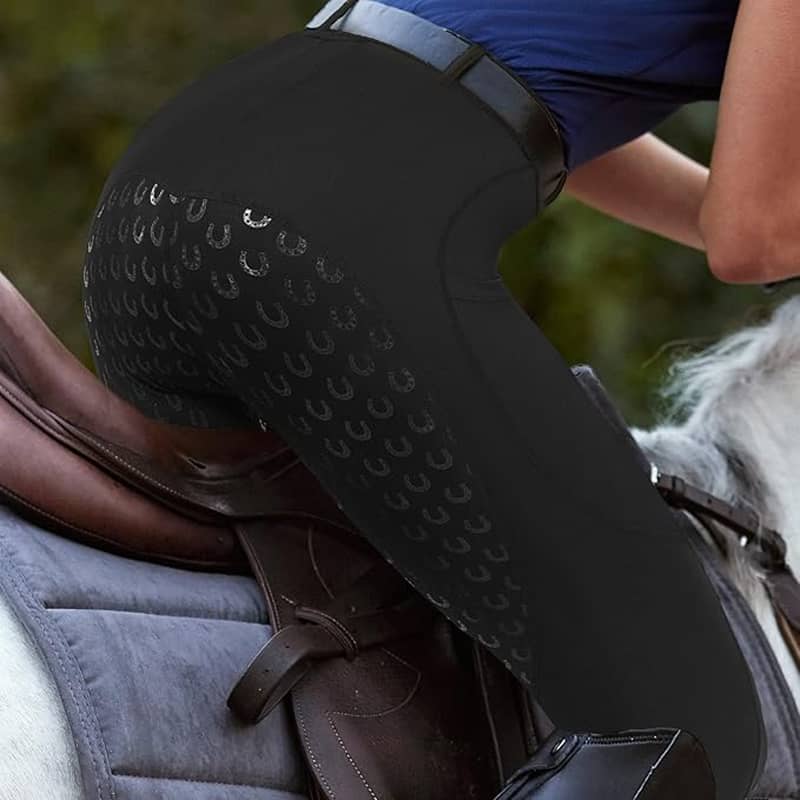Quick Reference Guide: Custom Riding Apparel Decision Matrix
| Material Type | Lo mejor para | Plazos de entrega |
|---|---|---|
| Polyester-Spandex Blend | Competition riding, moisture-wicking | 3-4 weeks |
| Merino Wool Blend | Base layers, temperature control | 4-6 weeks |
| Recycled Polyester | Eco-conscious brands | 4-5 weeks |
The global equestrian apparel market is experiencing tremendous growth, reaching $5.69 billion in 2025 with a steady 5.2% annual growth rate. We see this expansion being driven by riders who demand personalized gear that combines safety, comfort, and brand identity. At Zest Ecuestre, we are revolutionizing how custom riding apparel is designed and produced.
Choosing the Right Materials for Your Custom Riding Apparel
Understanding Performance Fabric Technologies
When creating custom horse riding apparel, selecting the right materials becomes the foundation of quality gear. Today's riders need fabrics that can handle intense movement while maintaining comfort throughout long training sessions. Furthermore, synthetic blends now dominate the market, with polyester-spandex combinations representing over 60% of premium riding breeches.
These advanced materials offer four-way stretch capabilities, allowing riders to maintain full range of motion. Additionally, moisture-wicking properties keep riders dry during intense workouts. However, the key lies in understanding which material works best for specific riding disciplines and weather conditions.
Perspectiva del sector: According to recent market research, "The growth of the Global Horse Riding Clothing Market is primarily driven by rising awareness of safety and comfort among equestrians, which fuels demand for specialized riding apparel." This trend shows how riders prioritize performance over basic functionality.
Sustainable Material Options Gaining Popularity
Environmental consciousness is reshaping equestrian fashion, with sustainable textiles accounting for 18% of new product launches in 2025. Organic cotton blends provide natural breathability for casual riding gear. Meanwhile, recycled polyester maintains high-performance characteristics while reducing environmental impact.
Professional manufacturers now offer comprehensive fabric sourcing services that include eco-friendly options. These materials meet sustainability requirements without compromising durability or comfort standards.
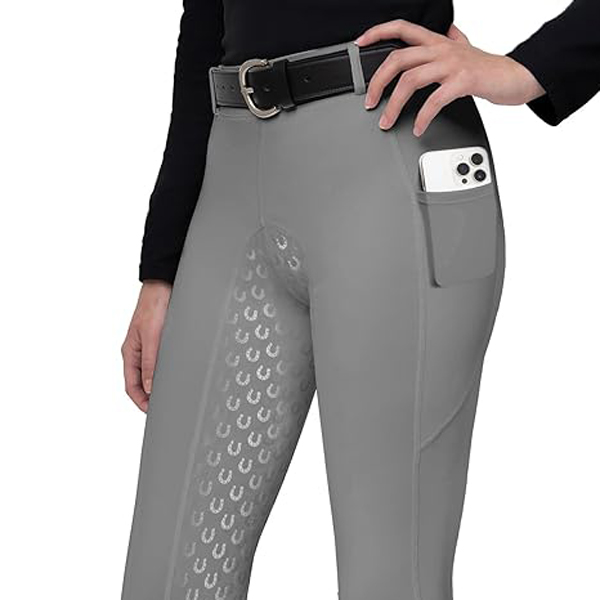
Women's Custom Riding Breeches
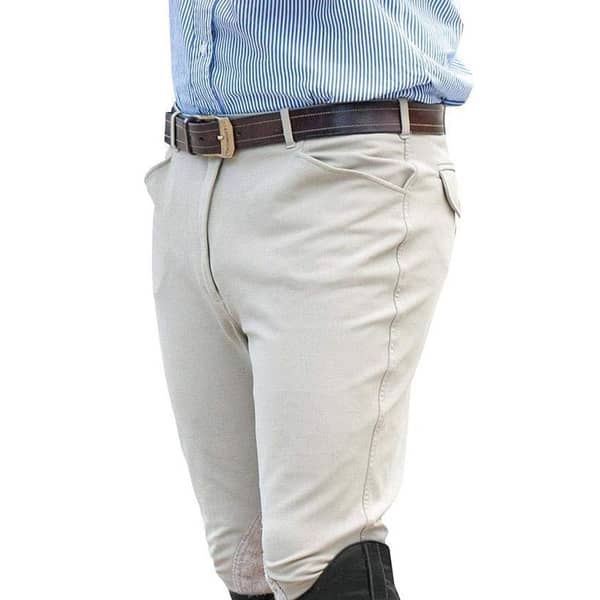
Men's Performance Riding Breeches
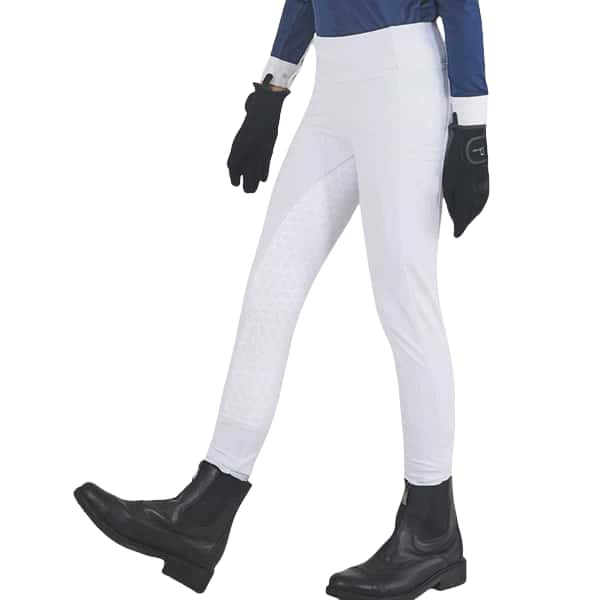
Children's Custom Riding Apparel
Grip Patterns That Actually Work: Full-Seat vs. Knee-Patch
Full-Seat Silicone Technology for Maximum Security
Full-seat silicone gel prints have become the gold standard for competitive riders, representing 48% of the premium breeches market. These patterns provide uniform grip across the entire seat area, creating superior saddle adhesion during complex movements. Moreover, modern silicone formulations maintain flexibility while offering excellent durability.
The manufacturing process involves precision application of medical-grade silicone in various patterns. Hexagonal designs offer optimal grip-to-flexibility ratios, while linear patterns work better for dressage applications. Additionally, specialized manufacturing services can create custom grip patterns based on specific riding disciplines.
"Silicone and embossed neoprene zones on breeches and gloves are becoming standard to improve rider stability and tactile feedback." — Industry manufacturing analysis, 2025
Knee-Patch Designs for Training and Versatility
Knee-patch grip systems constitute 32% of mid-range riding apparel, offering targeted support where riders need it most. These designs work exceptionally well for training scenarios where riders require grip without full-seat restriction. Furthermore, suede and synthetic leather patches provide traditional feel with modern performance benefits.
Professional riders often prefer knee-patch designs for schooling younger horses because they allow more natural seat movement. The placement and size of these patches can be customized based on individual rider preferences and specific discipline requirements.
Logo Placement and Branding: Maximum Impact Strategies
Multi-Location Embroidery for Brand Recognition
Strategic logo placement transforms riding apparel into powerful branding tools. Research shows that over 70% of custom orders include multi-location embroidery, with chest, thigh, and back panels being the most popular positions. However, successful branding requires understanding visibility angles during different riding positions.
Upper thigh placement offers excellent visibility for ground-based photography, while back panel logos show clearly during mounted activities. Additionally, chest placement works well for casual wear and barn activities. Professional branding services can optimize logo placement for maximum impact across different scenarios.
La opinión de los expertos: "Personalization and customization are surging as riders show off individualism with specially designed apparel—including embroidered names, logo branding, and color selection." This trend highlights the growing importance of unique brand identity in equestrian sports.
Advanced Logo Application Techniques
Heat-transfer and silicone appliqués now represent 22% of logo application methods, enabling full-color designs on stretch fabrics. These techniques maintain fabric performance while delivering vibrant, durable branding. Laser-etched logos integrated into high-stretch materials offer subtle elegance with exceptional durability.
3D silicone logos create dimensional branding effects that stand out in competitions and social media content. Moreover, these applications maintain flexibility and comfort while providing distinctive visual appeal that enhances brand recognition.
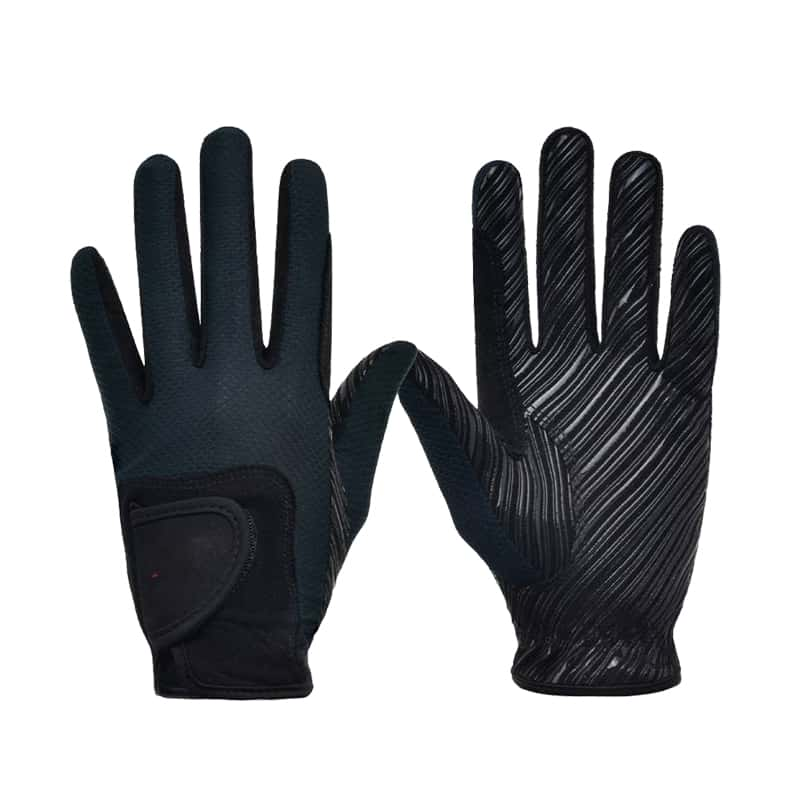
Custom Logo Competition Gloves
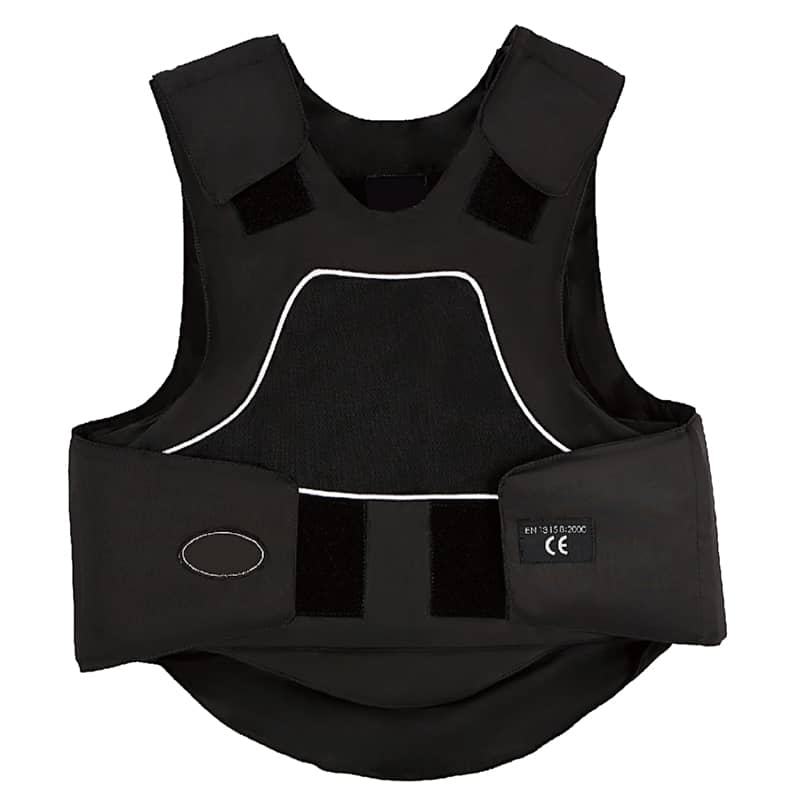
Branded Safety Equipment
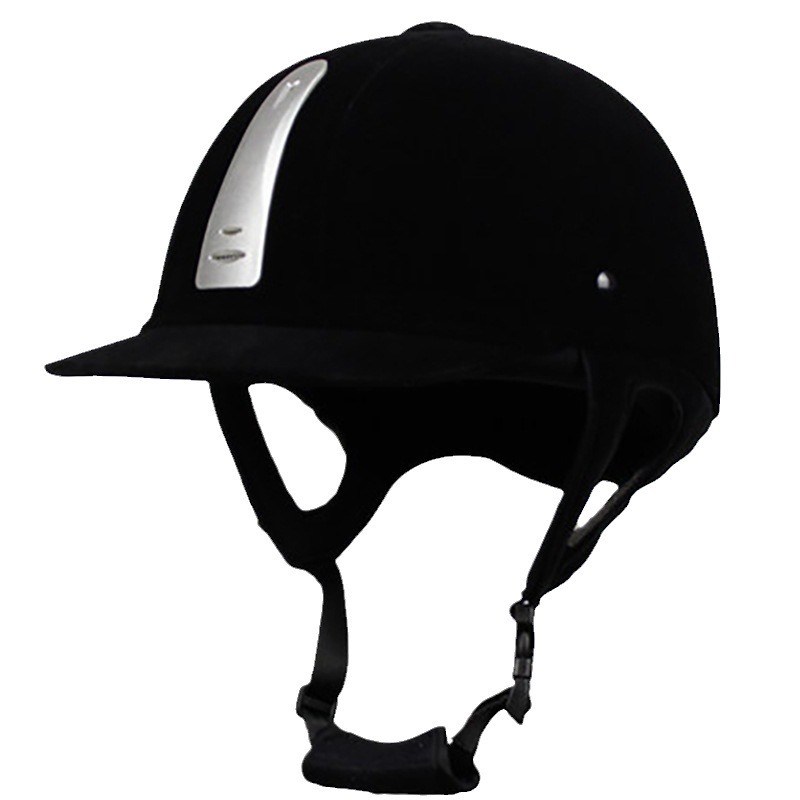
Custom Embroidered Riding Caps
Timeline and Process: What to Expect When Ordering Custom Apparel
Understanding Production Timelines
Custom riding apparel production requires careful timeline planning to meet specific event dates or seasonal launches. Standard orders typically require 4-6 weeks for completion, while complex customizations can extend to 8-10 weeks. However, experienced manufacturers can often accelerate timelines for urgent projects.
The process begins with design consultation and fabric selection, followed by pattern development and sample creation. Additionally, bulk production scheduling depends on factory capacity and seasonal demand patterns. Working with established OEM/ODM service providers ensures predictable delivery schedules.
Minimum Order Quantities and Batch Planning
Most manufacturers require minimum order quantities (MOQ) of 10-15 pieces per design to maintain cost efficiency. This requirement works well for riding schools, competition teams, and retail brands launching new collections. Furthermore, planning larger batches often reduces per-unit costs significantly.
Smart buyers coordinate multiple designs within single orders to maximize efficiency. For example, combining breeches, gloves, and accessories in one production run streamlines logistics while maintaining quality consistency across the entire product line.
Perspectiva sobre la fabricación: Laser-etched and heat-transfer logos integrated into high-stretch fabrics enhance durability and visual appeal for private-label and own-brand lines. This technology allows complex designs without compromising fabric performance.
Custom Apparel Checklist: Material, Grip, and Design Selection
Step-by-Step Decision Framework
Creating successful custom riding apparel requires systematic decision-making across multiple variables. First, determine primary use cases: competition, training, or casual riding. Then, select materials based on climate conditions and performance requirements. Additionally, choose grip patterns that match specific disciplines and rider preferences.
Consider these essential factors: budget constraints, delivery deadlines, and minimum order quantities. Moreover, think about future expansion plans when selecting manufacturers and establishing production relationships.
- Material Selection: Prioritize stretchy, moisture-wicking blends for active use
- Grip Configuration: Choose placement and pattern density based on riding style
- Logo Strategy: Plan multiple placement options for maximum brand exposure
- Timeline Planning: Allow 6-8 weeks for complex customizations
- Quality Control: Establish clear specifications and approval processes
Cost Optimization Strategies
Smart buyers can reduce costs through strategic planning and bulk ordering. Combining multiple product categories in single orders often unlocks better pricing tiers. Additionally, selecting in-stock fabrics rather than custom materials can significantly reduce both costs and lead times.
Trabajar con fabricantes que ofrecen comprehensive quality control prevents costly revisions and ensures first-time success. This approach saves both time and money while building long-term manufacturing partnerships.
Conclusion: Building Your Custom Riding Apparel Strategy
Successfully customizing horse riding apparel requires balancing performance materials, effective grip patterns, and strategic branding elements. The growing $5.69 billion equestrian apparel market offers tremendous opportunities for brands that understand rider needs and manufacturing capabilities.
Smart material selection, whether synthetic blends or sustainable alternatives, forms the foundation of quality custom apparel. Additionally, choosing appropriate grip patterns significantly impacts rider performance and safety. Furthermore, strategic logo placement transforms functional gear into powerful branding tools that enhance team identity and sponsor visibility.
Ready to create custom riding apparel that stands out in the arena and the market? Contacto Zest Equestrian today to discuss your custom equestrian apparel project. With over 16 years of manufacturing expertise and comprehensive servicios de personalización, we transform your vision into high-performance riding gear that riders love and trust.
Start Your Custom Riding Apparel Project Today
Get expert guidance on materials, grip patterns, and branding solutions that elevate your equestrian brand.
External Resources and Industry References:
- Global Equestrian Apparel Market Analysis - MetaStat Insight
- Horse Riding Equipment Market Report - Grand View Research
- Horse Riding Apparel Market Trends - Verified Market Reports
- 2025 Equestrian Fashion Trends - RiderTack
- Estudio de mercado sobre ropa ecuestre - Maximice el estudio de mercado
- LinkedIn Market Analysis: Horse Riding Apparel Applications
- Industry Analysis: Equestrian Apparel - GM Insights
- 2025 Fashion Forecast - Practical Horseman Magazine

